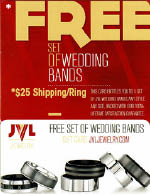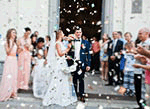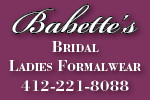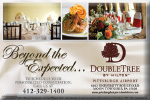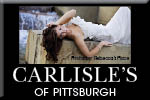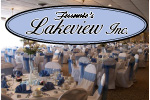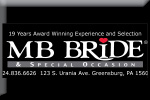Selecting a Diamond
Do you prefer to know or to be completely surprised? That’s the question regarding engagement rings. In many cases, budget dictates some prior discussion and/or collaboration between you and your fiancé. Follow these basic guidelines when choosing a diamond.
The 4 Cs
1. Cut does not refer to the shape of the diamond, but rather to the number of facets cut into it. Industry standards call for 58 full facets to bring out the brilliance of the gemstone. The shape of the diamond is a matter of personal preference and can be round (brilliant), rectangular (emerald), diamond (marquise), pear, oval, or heart shaped.
2. Color is absent in a perfect diamond. A totally colorless diamond acts as a prism, allowing light to pass effortlessly through the diamond and be transformed into rainbows of color. Diamond colors range from a light yellow to colorless, and even though a diamond may be large in size, those with a yellow tint have diminished value.
3. Clarity refers to the diamond’s interior or exterior flaws or inclusions. To determine a diamond’s clarity, it is viewed under high-powered magnification by your jeweler’s trained eye. Minute flaws neither mar its beauty nor endanger its durability, but the most valuable diamond is flawless.
4. Carat is the weight measurement used to determine diamond size. One carat is divided into 100 “points,” so, for example, a diamond of 62 points weighs 0.62 carats. Although the size of your diamond is definitely the biggest factor in determining its value, it does not guarantee high quality. Two diamonds of equal size can have substantially different values, depending on quality.
Selecting a Setting
Gold remains the most popular setting choice, followed by either white gold or platinum. Some rings use gold for the band with platinum prongs (stronger and less visible) to hold the diamond in place.
The most popular s
tyles are solitaire, and main stone flanked by two or more side stones. Pre-made styles vary widely from traditional to contemporary.
A growing number of couples search for unique wedding and engagement bands. A jewelry craftsman can help create just about any combination of setting and stone. Precious and semi-precious stones other than the traditional diamond are acceptable for your engagement ring, although diamonds remain the number one choice. The groom’s wedding ring can match the bride’s or can be totally different.
When to Buy Your Wedding Rings
Couples typically purchase rings no later than two to four months prior to the ceremony. Wedding rings may be put on layaway at the same time the engagement ring is purchased. Whatever you select, make sure that you both have your rings professionally sized at least one month prior to the ceremony.
Cleaning Your Rings
Always check with your professional jeweler on the correct way to clean your rings. They may provide a professional cleaning solution—be aware that certain stones are affected differently.
Diamonds should be cleaned monthly to retain their brilliance. Soak them in warm soapy water with mild detergent. Gently brush with a very soft toothbrush. Rinse with clear warm water and pat dry on a lint-free cloth.
|

